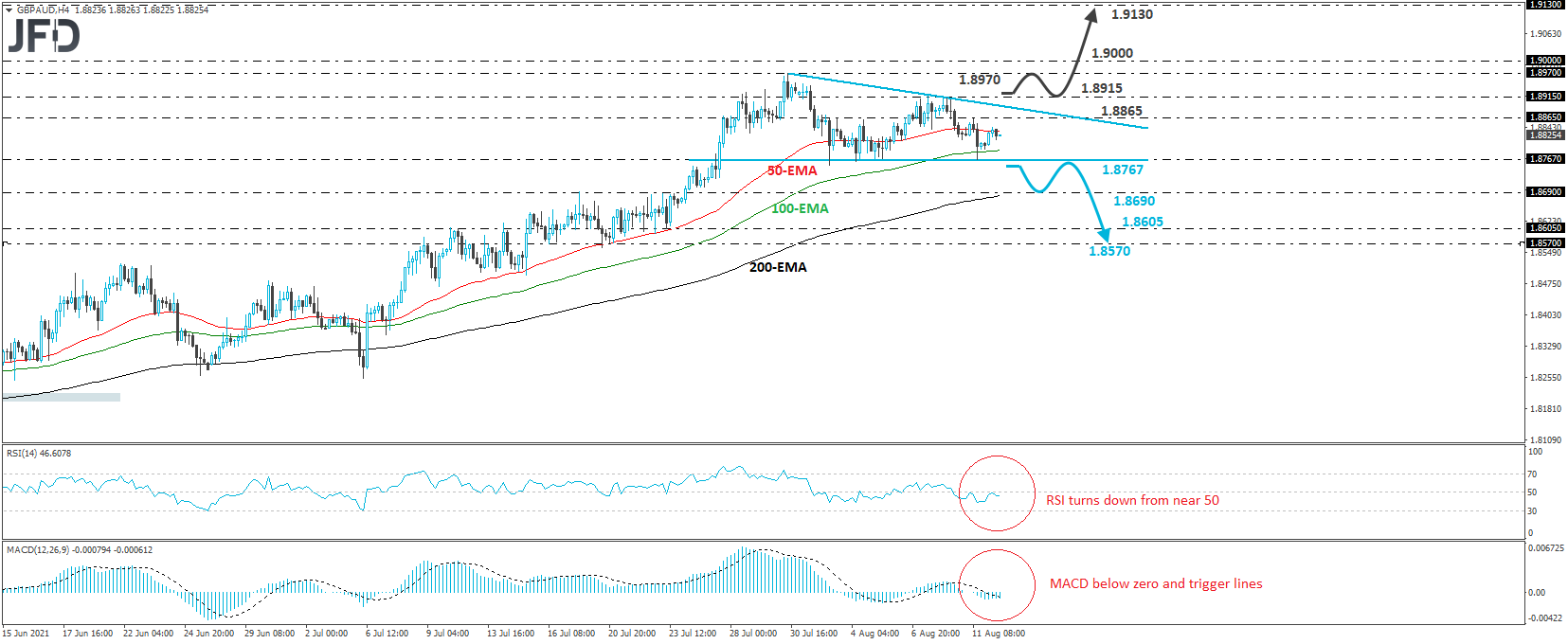GBP/AUD traded slightly higher during the European morning Thursday, after it hit support at 1.8767 yesterday. Overall though, the pair looks to be trading within a descending triangle since July 27. In theory, these patterns tend to be bearish, however, we prefer to wait for a clear exit out of the formation before we start examining the forthcoming directional wave. For now, we will stay neutral.
In order to start examining the bearish case, we would like to see a dip below 1.8767, the lower bound of the triangle. Such a move would confirm a forthcoming lower low on the 4-hour chart and may signal a short-term bearish reversal. Sellers may then get encouraged to push the action towards the 1.8690 area, marked by the inside swing highs of July 19 and 23, the break of which could see scope for extensions towards the 1.8605 barrier, or the 1.8570 hurdle, defined as supports by the lows of July 23 and 21 respectively.
Taking a look at our short-term oscillators, we see that the RSI turned down after it hit its 50 line from underneath, while the MACD, although slightly below both its zero and trigger lines, shows signs of turning up. The conflicting indications of those two mechanical studies add more credence to our choice of standing pat until the rate exits the aforementioned triangle.
On the upside, we would like to see a break above 1.8970 before we start assessing whether the bulls have gained full control. This will not only confirm the break above the upper end of the triangle, but also a forthcoming higher high on the 4-hour chart. The first level to get tested after such a move may be the peak of July 30, at 1.8970, and then the psychological number of 1.9000. If neither barrier is able to stop the bulls, then a break higher could set the stage for the high of May 12, 2020, at around 1.9130.
